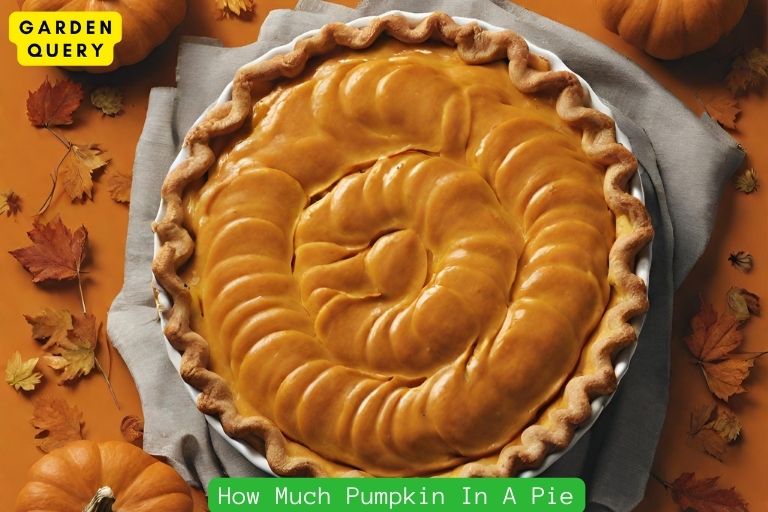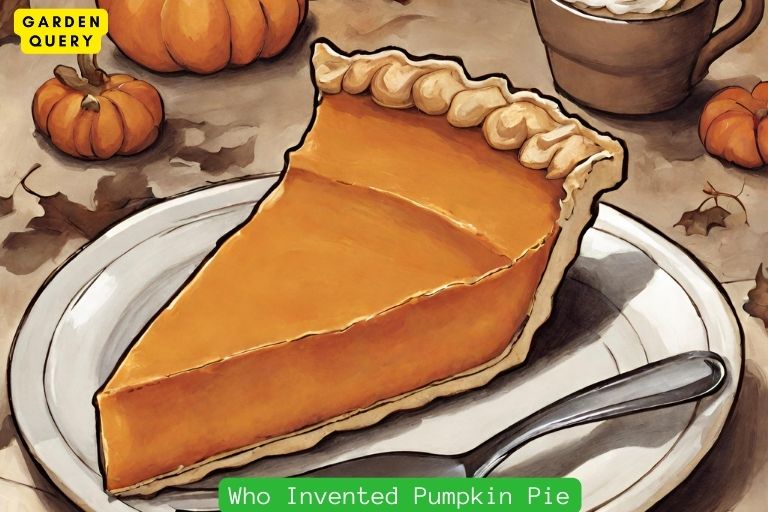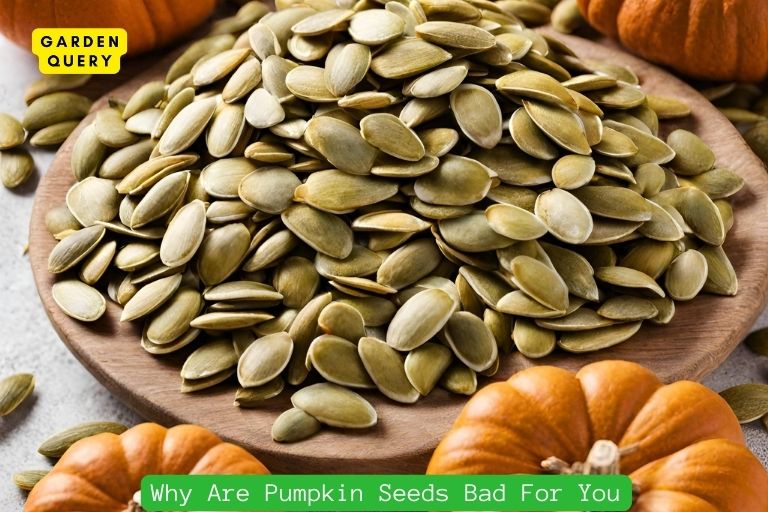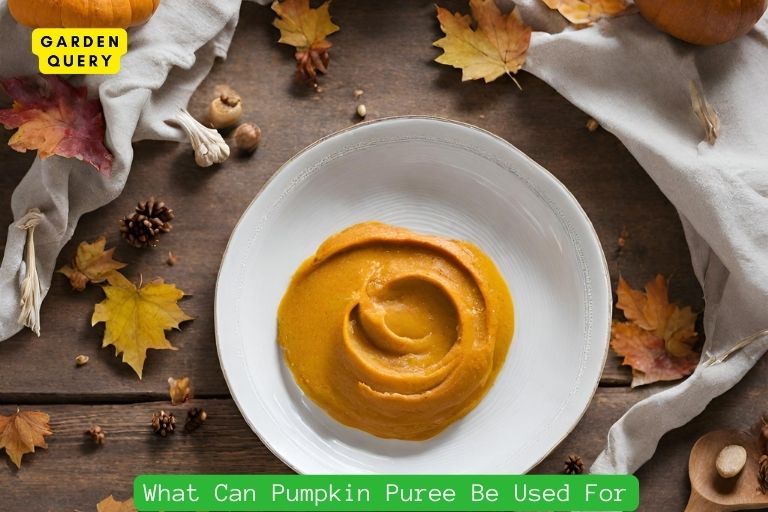How Much Pumpkin In A Pie?
How Much Pumpkin In A Pie
The History of Pumpkin Pie
Pumpkin pie has become synonymous with autumn and Thanksgiving celebrations. But have you ever wondered how this delicious dessert came to be? The history of pumpkin pie dates back to the early colonial days in America. The native Americans were already familiar with pumpkins, which they cultivated as part of their diet. When the European settlers arrived, they discovered the versatility of this fruit and incorporated it into their cooking. Pumpkin pie eventually became a staple in their fall harvest celebrations, as pumpkins were abundant during that time of the year.

Pumpkin Pie: A Traditional Fall Dessert
Today, pumpkin pie continues to be a beloved dessert that is enjoyed by many during the autumn season. But how much pumpkin do you need to make a pie? The answer may vary depending on the recipe, but typically, a standard pumpkin pie calls for around 2 cups of pureed pumpkin. This equals to about half of a medium-sized pumpkin. Some recipes may call for canned pumpkin puree, which is a convenient alternative if you don’t have fresh pumpkins on hand. However, using fresh pumpkin can add a natural and unique flavor to your pie.
When making a pumpkin pie, it is important to choose the right type of pumpkin. Sugar pumpkins, also known as pie pumpkins, are the best choice for making pumpkin pie. They have a sweeter and smoother flesh compared to the large carving pumpkins. Simply cut the pumpkin in half, scoop out the seeds, and bake the halves in the oven until the flesh is soft. Then, scoop out the cooked pumpkin and puree it in a blender or food processor until smooth.
Other than the pumpkin puree, a typical pumpkin pie recipe includes ingredients like eggs, sugar, spices such as cinnamon, nutmeg, and cloves, as well as evaporated milk or cream. The mixture is poured into a pie crust and baked until set. Once it has cooled, you can top it with whipped cream for an extra touch of deliciousness.
In conclusion, pumpkin pie has a long history as a traditional fall dessert. While the amount of pumpkin needed may vary, using around 2 cups of pureed pumpkin is a good starting point for most recipes. So, next time you’re craving a slice of this seasonal treat, go ahead and try making your own pumpkin pie with fresh pumpkin puree.
The Role of Pumpkin in the Pie
If you are a fan of pumpkin pie, you may have wondered how much pumpkin goes into making this delicious dessert. Well, the answer lies in the use of pumpkin puree as the key ingredient. So, let’s explore the importance of pumpkin puree and how to choose the right variety for your pie.
The Importance of Pumpkin Puree
Pumpkin puree serves as the base for pumpkin pie and provides its distinct flavor and texture. It is made by boiling or baking pumpkin, then pureeing it until it becomes smooth and creamy. Adding spices such as cinnamon, nutmeg, and cloves enhances its taste, giving the pie its signature autumnal flavors.
The amount of pumpkin puree you need for a pie depends on personal preference and the size of the pie. Typically, a standard 9-inch pie requires around two cups of pumpkin puree. However, you can adjust the quantity according to your taste and desired texture.
The Perfect Pumpkin: Choosing the Right Variety
When it comes to pumpkin pie, not all pumpkins are created equal. The best pumpkins for making pumpkin puree are those specifically bred for culinary purposes. These varieties have a higher sugar content, which means they are sweeter and more flavorful.
Some popular pumpkin varieties for making puree include:
- Sugar Pie Pumpkins: Also known as “pie pumpkins,” these small, round pumpkins have a dense, sweet flesh that is perfect for baking and pureeing. They are the go-to choice for many bakers when making pumpkin pie.
- Cinderella Pumpkins: These pumpkins are known for their deeply ribbed and flattened shape. Their vibrant orange flesh is flavorful and ideal for making pumpkin puree.
- Butternut Squash: Although not technically a pumpkin, butternut squash can be used as a substitute in pumpkin pie recipes. Its golden orange flesh has a sweet, nutty flavor that works well in pies.
Remember to select pumpkins that are firm, heavy for their size, and free from blemishes or soft spots. It’s also essential to choose pumpkins that are ripe but not overly ripe, as overly ripe pumpkins can result in a watery puree.
So, the next time you make a pumpkin pie, use the right amount of pumpkin puree and choose the perfect pumpkin variety to ensure your pie is bursting with flavor and delighting your taste buds.
How Much Pumpkin is Needed
The Ideal Pumpkin to Pie Ratio
Nothing says fall quite like a warm, delicious pumpkin pie. But when it comes to making this seasonal treat, one common question arises: how much pumpkin do you actually need? The ideal pumpkin to pie ratio is about 2 cups of pumpkin puree for a standard 9-inch pie. This amount provides a perfect balance of pumpkin flavor and creamy texture. However, this ratio can be adjusted based on personal preference.
Calculating Pumpkin Requirements for Different Pie Sizes
But what if you want to make a larger or smaller pie? Here’s a simple guide to calculate the amount of pumpkin needed for different pie sizes:
- For a 6-inch pie, use approximately 1 cup of pumpkin puree.
- For an 8-inch pie, use about 1.5 cups of pumpkin puree.
- For a 10-inch pie, increase the amount to around 3 cups of pumpkin puree.
Remember, these measurements are for the pumpkin puree, not whole pumpkins. To make pumpkin puree, you can either use canned pumpkin or make it from scratch by oven-roasting or boiling and blending the flesh of a pumpkin. Canned pumpkin is a convenient option, as it is readily available and saves time. However, homemade puree can offer a fresher flavor.
It’s important to note that the amount of pumpkin needed may vary depending on the recipe. Some recipes may call for additional ingredients or spices that might alter the pumpkin to pie ratio. It’s always a good idea to follow the specific instructions provided in the recipe you are using, as they may offer more precise measurements.
In conclusion, while the ideal pumpkin to pie ratio is generally around 2 cups of pumpkin puree for a standard 9-inch pie, it can be adjusted based on personal preference. Remember to consider the size of your pie when calculating the amount of pumpkin needed, and be sure to follow the instructions in your recipe for the most accurate measurements. So go ahead, get creative, and enjoy your homemade pumpkin pie!
Making Homemade Pumpkin Puree
Step-by-Step Guide to Making Pumpkin Puree
For those who love the taste of homemade pumpkin pie, making your own pumpkin puree can be a rewarding and delicious endeavor. Not only does it allow you to control the quality and flavor of your pumpkin puree, but it also gives you the flexibility to customize the texture to your liking. Here is a step-by-step guide to making pumpkin puree from scratch:
- Start by selecting a sugar pumpkin, also known as a pie pumpkin. These smaller, sweeter pumpkins are ideal for making puree. You can find them at your local farmer’s market or grocery store during the fall season.
- Preheat your oven to 350°F (175°C).
- Carefully cut the pumpkin in half and remove the stem. Scoop out the seeds and fibers using a spoon.
- Place the pumpkin halves cut side down on a baking sheet lined with parchment paper or aluminum foil.
- Bake the pumpkin for about 45-60 minutes or until the flesh is tender when pierced with a fork.
- Remove the pumpkin from the oven and let it cool for a few minutes. Once it’s cool enough to handle, scoop out the flesh from the skin.
- Transfer the pumpkin flesh to a blender or food processor and blend until smooth. You may need to do this in batches depending on the size of your pumpkin.
- If you prefer a thicker puree, you can strain it through a fine-mesh sieve or cheesecloth to remove any excess liquid.
- Store the pumpkin puree in an airtight container in the refrigerator for up to 5 days, or freeze it for longer storage.
Alternative Options: Canned Pumpkin or Store-Bought Puree?
If making homemade pumpkin puree seems like too much effort or you’re short on time, don’t worry! Canned pumpkin or store-bought puree can be convenient alternatives. While they may not have the same fresh taste as homemade puree, they can still produce delicious results in your pumpkin pie. Just make sure to check the labels and choose 100% pure pumpkin without any added sugars or spices.
When substituting canned pumpkin or store-bought puree for homemade puree in a recipe, the general rule of thumb is to use the same amount called for in the recipe. For example, if a recipe calls for 1 cup of homemade pumpkin puree, you can use 1 cup of canned pumpkin or store-bought puree instead.
Remember, whether you choose to make your own pumpkin puree or use a canned alternative, the key to a delicious pumpkin pie lies in the quality of the pumpkin and the spices you choose to enhance its flavor. So go ahead, get creative in the kitchen, and enjoy the warm and comforting flavors of homemade pumpkin pie.
Tips for Baking the Perfect Pumpkin Pie
The Essential Ingredients and Measurements
When it comes to baking a delicious pumpkin pie, getting the right balance of ingredients is crucial. The star of the show, of course, is the pumpkin. But how much pumpkin should you use for that perfect pie?
- Pumpkin Puree: The standard measurement for pumpkin puree in a pie recipe is around 15 ounces, which is equivalent to about 1.88 cups. You can use canned pumpkin puree or make your own by cooking and pureeing fresh pumpkin. Just make sure it’s smooth and free from any lumps for a silky pie filling.
- Sugar: To add a touch of sweetness, most recipes call for ¾ to 1 cup of granulated sugar. Adjust the amount based on your preference and the sweetness of the pumpkin you are using.
- Spices: Pumpkin pie would not be complete without its distinctive blend of spices. Common spices include cinnamon, ginger, nutmeg, and cloves. Depending on your taste, a teaspoon to a tablespoon of each spice can be used.
- Eggs: Eggs are essential for binding and setting the pie filling. A typical recipe will call for 2 to 3 eggs, depending on the desired consistency and size of the pie.
- Milk: To create a creamy texture, most pumpkin pie recipes use evaporated milk or sweetened condensed milk. The amount can range from ½ to 1 ½ cups, depending on how rich and creamy you want your pie to be.
Secrets to a Flawless Pumpkin Pie Crust
While the filling is certainly the star of the show, a great pumpkin pie needs a perfect crust to complete the culinary masterpiece. Here are a few tips to achieve a flawless crust:
- Chill Your Ingredients: Use cold butter or shortening, and ice water when making your crust. Cold ingredients help you achieve a flaky texture.
- Blind Bake: To prevent a soggy crust, blind bake it before adding the filling. Pre-bake the crust for about 10 minutes, then add the filling and continue baking.
- Egg Wash: Brushing the crust with beaten egg before baking gives it a beautiful golden color.
- Protect the Edges: Cover the edges of the crust with foil or a pie crust shield to prevent them from browning too quickly.
- Rest the Pie: Allow your pumpkin pie to cool completely before slicing. This helps the filling set and ensures clean, neat slices.
By following these tips, you’ll be well on your way to baking the perfect pumpkin pie that will impress your family and friends this holiday season. Happy baking!
Variations and Enhancements
When it comes to pumpkin pie, there’s no denying its status as a classic American dessert. But did you know that there are countless variations and enhancements you can make to take this fall favorite to the next level? From creative twists on the traditional recipe to adding spices and flavors, let’s explore some ways to elevate your pumpkin pie experience.
Creative Twists on Classic Pumpkin Pie
- Maple Bourbon Pumpkin Pie: For those looking to add a touch of sophistication, try infusing your pumpkin pie filling with a generous splash of maple syrup and a hint of bourbon. The rich flavors will complement the natural sweetness of the pumpkin and create a unique twist on the traditional recipe.
- Pumpkin Pecan Pie: Combine the best of both worlds by adding a layer of crunchy pecan streusel on top of your pumpkin pie. The contrast in textures and flavors will give your pie an irresistible taste and make it a standout at any gathering.
- Chocolate Pumpkin Pie: For all the chocolate lovers out there, adding a layer of smooth and creamy chocolate ganache to your pumpkin pie will take it to a whole new level. The combination of the rich chocolate and the spiced pumpkin filling will create a decadent dessert that is sure to impress.
Adding Spices and Flavors to Elevate Your Pie
- Warm Spices: While nutmeg, cinnamon, and cloves are traditional spices used in pumpkin pie, don’t be afraid to experiment with additional warm spices like ginger, allspice, or cardamom. These spices can enhance the flavor profile of your pie and add depth and complexity.
- Flavored Whipped Cream: Instead of plain whipped cream, consider adding a twist by incorporating flavors like vanilla, cinnamon, or even a hint of maple syrup. The flavored whipped cream will complement the pumpkin pie and add an extra layer of deliciousness.
- Sweet and Salty: If you want to add a unique flavor combination, sprinkle a pinch of sea salt on top of your pumpkin pie before serving. The salt will balance the sweetness of the pie and create an interesting contrast of flavors.
With these variations and enhancements, you can turn an already beloved dessert into a show-stopping masterpiece. Whether you choose to experiment with creative twists or add spices and flavors, your pumpkin pie will be a delicious and unforgettable treat for everyone to enjoy.
**Note: The amount of pumpkin needed for a standard 9-inch pumpkin pie is usually around 1 3/4 cups.
- Best Therapists In Dallas - February 1, 2024
- Holly Willoughby Husband: Holly Willoughby’s Love Story - January 30, 2024
- Holly Willoughby Dress: 5 Style Secrets and 7 Must-Know Career Milestones - January 30, 2024





